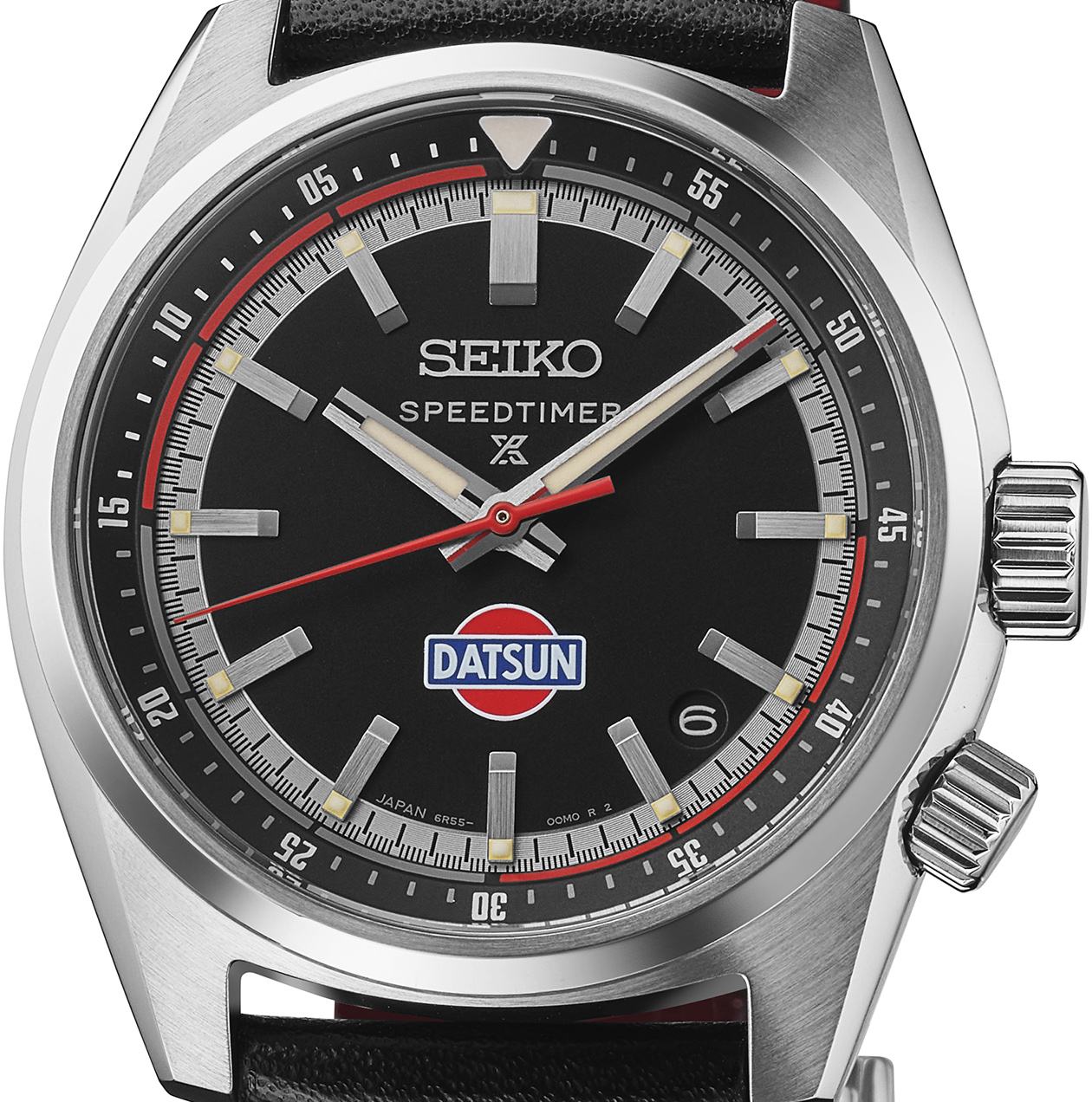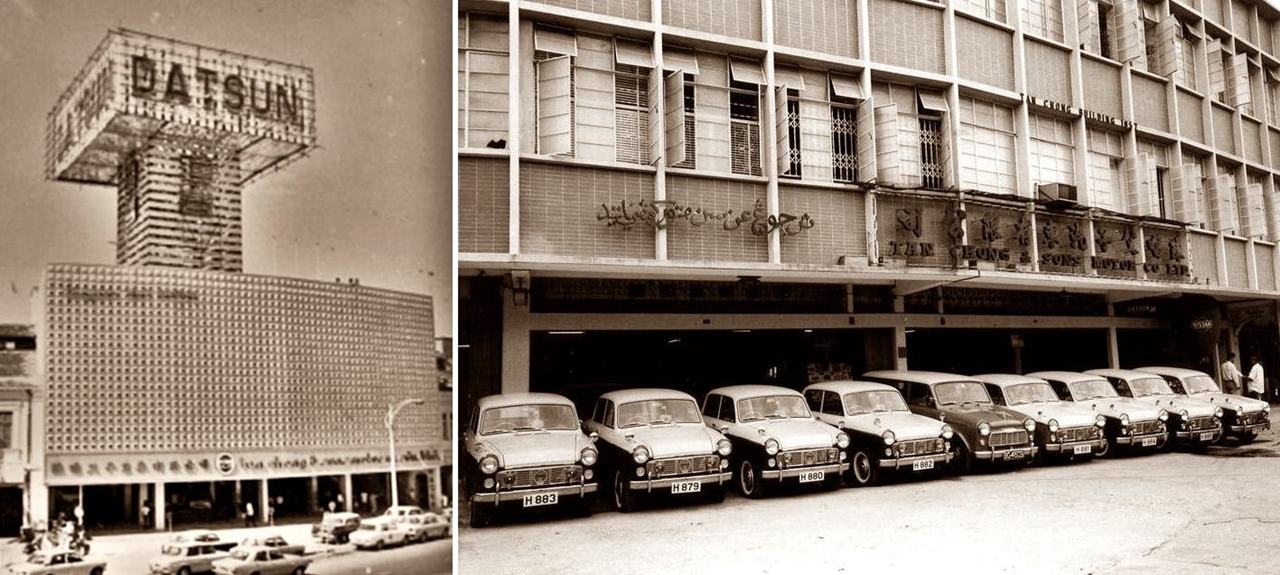Quick look
- A collaboration which pays homage to the Datsun 240Z that won the 1971 East African Safari Rally.
- Limited-edition Speedtimer watches reflect the era’s advancements in time measurement.
- Each watch features unique Datsun logo designs and rally-inspired themes.
The decade of the 1960s was an important one for Seiko, the well known watchmaker founded in 1881. Already well established since the 1920s, Seiko made many advances in the 1960s to measure elapsed time accurately. This proved valuable in international sporting competitions, especially when Japan hosted the 1964 Olympics.
In 1969, Seiko introduced the Speedtimer, the world’s first automatic chronograph equipped with both a vertical clutch and a column wheel, two features that greatly enhanced the measurement of elapsed time.

The connection with the 240Z
That same year, Nissan introduced the Datsun 240Z, a sportscar that would become legendary in automotive history. With the aim of demonstrating its high performance, Nissan entered the 240Z in the international rallies. Seiko also joined in with support, sharing the victory when a 240Z won the 6,200-km East African Safari Rally in 1971.
This month, Seiko pays homage to its shared legacy with the 240Z and the advancements of the 1960s and early 1970s with 3 limited-edition watches. These watches are part of the Speedtimer series, and will be joined by an additional 3 watches in the main Prospex Speedtimer series
Historic design elements
Each watch in the collaboration is inspired by the Datsun sportscar, with design elements echoing the car’s rally livery in red and black tones and dials that feature different styles of the Datsun logo.

The SPB517, a watch powered by the mechanical Caliber 6R55 automatic movement, features a logo with a red circle and blue rectangle and white Datsun lettering. The SRQ057, powered by the mechanical chronograph Caliber 8R48, displays the Datsun name in cursive script, while the SSC957, powered by the solar V192 chronograph movement, has the Datsun name in block letters.
Iconic Datsun logos are engraved on two of the watches’ case backs. The SPB517 features the brand logo used at the time, while the SRQ057 has a logo based on the emblem on the rallycar. The SSC957 case back is adorned with an original illustration of the Datsun 240Z, specially made for this watch.

The SPB517 features a countdown timer function that can be used to measure key intervals in motorsports competitions, such as the time remaining before the start and target durations for tasks such as tyre changes and refuelling. The SRQ057 automatic chronograph has a tachymeter scale on the outer bezel for enhanced legibility and a sporty aesthetic.
Furthermore, the scale used allows for measuring speeds from 50 km/h to 60 km/h, paying homage to the original Speedtimer bezel format from 1969. The chronograph movement’s vertical clutch and column wheel ensure the precision and reliability that are the hallmarks of Seiko’s 8R movement series.

The Caliber 8R48 features a 30-minute counter at 9 o’clock and a 12-hour counter at 6 o’clock, and is constructed with robustness and maintainability in mind. Its escapement is lightweight and strong, thanks to the use of MEMS technology, which enhances the stability of the watch’s precision.

The SSC957 solar chronograph features a 60-minute chronograph function and a 24-hour sub-dial, and when fully charged, the watch operates for up to 6 months without exposure to light.
The leather straps are sourced from tanneries certified by the Leather Working Group, of which Seiko is a member. The seams on the inner sides of both of the leather straps are covered with lining to minimize damage from sweat and water, and the strap of the SPB517 is perforated for a sportier aesthetic.

Limited editions
The three collaboration timepieces are available at the Seiko boutiques and select retail partners worldwide. Each will be offered as a limited edition: 2,500 pieces for SPB517, 500 pieces for SRQ057, and 4,000 pieces for SSC957. Prices range from RM4,500 to RM16,500.
About Datsun
Malaysians, especially the older ones, will remember Datsun well. They were among the first Japanese cars to be sold in the country from the late 1950s, imported by Tan Chong Motors. While the creation of the Datsun name is somewhat complex, it became a strong brand name for the vehicles of the company. In fact, it was so well known that it overshadowed the name of the company which began as DAT Jidosha Seizo, and later became Nissan Motor.

There is a story that when Nissan began expanding in Europe in the 1970s, some of its directors approached a bank in one of the countries. When they introduced themselves as being from Nissan, the bankers did not seem to know about the company. Then when they said their company made Datsun cars, they immediately got a positive response and presumably, loans were approved for their business growth.

The incident must have made them think seriously about corporate identity. While some other companies would change their corporate name to be the same as the brand name (eg Mazda and Subaru), Nissan chose to use its company name as the brand name. This occurred in 1984 and the Datsun name was retired (except for one product in America). However, Nissan would bring it back for a low-cost sub-brand in 2013 but retire it again in 2022 as the strategy did not work out well.
Nissan pays homage to rally winner with Safari Rally Z Tribute



